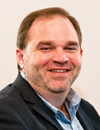
Committees
The Good, The Bad, and The Ugly
By Gary Van Der Laan, CFCAM, CMCA, AMS, PCAM, Senior Vice President / Published May 2022

The subject of committees in associations is one often met with a roll of the eyes. Our feelings toward committees are based on our experiences, and many of those have been negative; often from both the side of having served on a committee and experiencing frustration with the board, and as a board member having been equally frustrated with the actions of a committee.
Some committees are required, either by the State of Florida statutes or the association’s governing documents. Regardless of why they exist, a committee that is set up correctly and runs effectively can be a great asset to any community. A committee can be one of the most productive tools that an association has for goal achievement. They facilitate debate on important issues and can be effective forums for decision making.
So why do we sometimes feel (or hear from others) that committees are not a good thing?
Sometimes Things Go Bad
Committees do not work well when there are any of the following:
- No clear focus on why the committee exists
- A difference between what the board intends and the intended purpose of the members
- Poor involvement by one or more members
- Lack of interest/members
How to Make Sure It’s All Good
Be aware of laws from the State of Florida and guidelines within the community’s governing documents which may affect what committees your community has and what their duties are. For example, Florida law requires that architectural review committees post notice of their meetings and that the meetings be open to members of the association. Florida law also has specific guidelines affecting committees that are involved in the violation fine process that affect scheduling and membership of that particular committee.
To get going in the right direction, ask for help. Attorneys who work with community associations are well versed in requirements for committees and can help make sure the board is going in the correct direction.
How to get started
- Committee charter— should be a written description of what is expected of each committee to guide the chair and members. The description should summarize the purpose of the committee, its composition and selection procedure, and the specific duties and expectations of the committee. The board should create the initial charter, and any changes requested by the committee need to be approved by the board.
- An effective committee chair—A good committee chair needs to understand the purpose of the committee and have leadership and people skills to help the members work effectively. You want a good leader of people and the process, someone who feels confident in guiding committee members to accomplish the task in a timely manner. The committee chair must also have confidence in the members and put the committee’s success over his or her own goals. A good chair is one who can work with people, can excite them to work together, and can draw out each member’s best skills.
- Effective members—You need members who have been thoughtfully appointed. This, of course, starts with finding members willing to join the committee. A well-run committee is much more attractive residents than one that appears to be in shambles. Members should be recruited with the following questions in mind: What task(s) is the committee responsible for, and who among your members possesses the skills and experience needed to complete those tasks? Match the needs and requirements of the committee to the skills, knowledge, and interests of prospective committee members.
- 4. Accountability to the board—Committees must have clear accountability. This begins with a written description outlining what is expected from the committee. Appointing a liaison from the board can be very helpful in keeping the committee on track with the goals the board has in mind as well as reporting back to the board on what actions the committee is taking. Note that in the case of a fining committee, board members are not permitted to participate.
- Well-run meetings—Few residents will want to join a committee that is not running efficiently and effectively. Below are tips for running an effective meeting.
Tips for Effective Committee Meetings
- Start on time.Everyone’s time is important. When it is time to start, assuming you have enough members to get going, then start.
- Have an agenda. The agenda provides a road map for the discussion, so the leader has a clear plan of action before the meeting starts. That agenda needs to be communicated in advance of the meeting, and any other necessary information should be sent to the members along with the agenda. In the case of an architectural review committee, the agenda may simply be a list of requests to be reviewed at that meeting. In another meeting that same committee may have been asked to consider changes to the guidelines. That should be on an agenda provided in advance to the committee members so that they are aware of what is coming up at that meeting.
- Encourage all members to participate. The chairperson should guide, not dominate, the conversation. Every member’s input is important.
- Have an action plan. Determine who is responsible for what and what the timelines are. Record these in the meeting notes and follow-up to make sure all action items are completed.
- Do a meeting audit every few months. The chair should examine the results of each meeting and determine whether they are effective. Review the meetings that worked and the ones that didn’t to determine if you need every meeting you’ve planned.
Additional suggestions—
- Make sure an evaluation procedure for the committee meetings is in place. Immediate feedback is a huge benefit in gauging the success of the meeting and making changes so meetings are efficient and effective.
- Post an annual calendar at the beginning of the year. Make sure your committee members know when meetings are and what is expected of them right from the outset.
- Provide an orientation for new committee members.
- Provide regular recognition to committee members. Acknowledge members who finish their term on the committee at their last meeting. Bonus tip: a certificate of appreciation goes a long way.
- Investigate inefficiencies. The chair should privately meet with members to find out what is happening and why they are not engaged with the group.
- Empower your members. Involve committee members in developing an annual committee plan of action and make sure that the committee plans are in alignment with the overall strategic plan of the association.
And finally, take action with the ugly
The ultimate recourse a board has is to dissolve a committee that has gone rogue. This should not be the first choice, but sometimes it becomes necessary if the members of the committee refuse to act in the best interest of the association. At that point the board has a duty to the community to take action. Failure to address a committee that is not acting in the best interest of the association can have detrimental consequences and must be dealt with as soon as possible.
Committees can be a valuable asset to a community. Use them wisely!
Gary Van Der Laan, CFCAM, CMCA, AMS, PCAM
Senior Vice President, Leland Management
Gary has been a licensed Florida community association manager for the past 25 years. He facilitates manager education and regularly leads board training programs throughout the state. Gary is certified by the State of Florida to teach continuing education courses for licensed managers as well as the Florida board member certification class. He is an active member of CAI and has served two years as president of the Central Florida chapter. Gary holds the CMCA, AMS, and PCAM designations through CAI, as well as the CFCAM designation from Florida Community Association Professionals (FCAP). He also serves as a member of the Community Association Network Advisory Board and served six years on the Florida Bar’s Unlicensed Practice of Law (UPL) committee. Gary is a contributor to the education curriculum of the statewide FCAP training program and has provided education courses at many city and county education conferences. For more information, email gvanderlaan@lelandmanagement.com.




